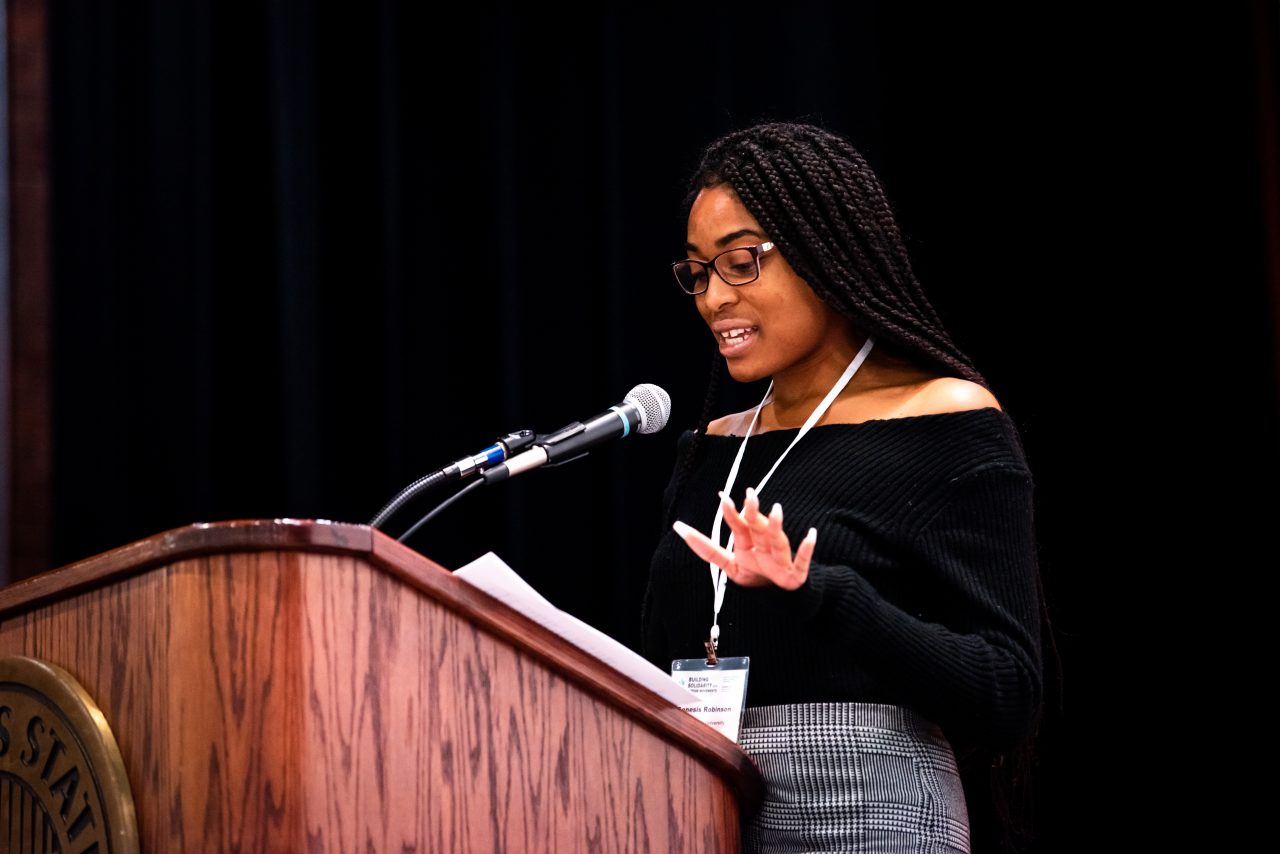Illinois State faculty, staff, and students gathered at the Bone Student Center November 18 and 19 to learn the importance of solidarity and activism at this year’s Culturally Responsive Campus Community (CRCC) Conference.
Event organizers reported that 772 people registered for the conference, a 30 percent increase over last year. CRCC Program Chair Shamaine Bertrand said a climate of heightened campus activism has driven increased interest in the conference, which is now in its fourth year.
“The CRCC has always advertised itself as being that space to talk about issues of equity, diversity, racism, whiteness,” said Bertrand, an assistant professor of elementary education. “People are really ready to have these conversations right now. If they are not ready, they want to come and hear what is happening. Maybe they will find it in themselves to become more comfortable with it.”
Attendees chose from more than 50 presentations by faculty, staff, students, community members, and invited speakers relating to “Building Solidarity Across Movements.” CRCC organizers chose the theme to unite activists and educate community members about their goals.
“We see a lot of people and groups doing individual things in an isolated manner,” Bertrand said. “What if we begin to build a sustainable movement across campus? We asked ourselves, ‘Who can do that?’ and started working on bringing in the speakers and presenters who are doing this kind of work.”
The event was highlighted by two powerful noon–hour keynote speeches held in the Brown Ballroom. Kelly Hurst, of Crossroads Antiracism Organizing and Training, gave her speech, “No Solidarity without Anti-Racism,” to a capacity crowd November 18. Hurst argued that institutional diversity initiatives have one thing in common.
“They have a 100 percent failure rate,” she said.
According to Hurst, these initiatives fail because they don’t ask and answer the right questions about systemic racism. Hurst spoke passionately about the need for more education on the impacts of historical racism and how white supremacy adapts to the times.
Hurst said the strongest way to counter racism is through effective organization. She ended her speech by challenging attendees to support the activists operating in their communities.
“I don’t need any more allies,” she said. “I need accomplices.”
Estela Mara Bensimon gave her speech, “No Solidarity without Equity,” to another large crowd the following day. Bensimon, director of the Center for Urban Education at the University of Southern California, said she changed her academic priorities after having an “intellectual crisis” over the use of the term “diversity” in higher education.
“I became concerned that the issue of diversity was undermining social justice in higher education,” Bensimon said. “I felt it was whitewashing racial justice.”
Bensimon focused her research on the importance of racial equity on campus. Equity differs from diversity as it requires corrective justice for minoritized populations, a strong anti-racist project, and the identification of “whiteness” as the standard of quality minority groups are expected to align themselves to, Bensimon said.
“I am not talking about whiteness as people. I am talking about whiteness as an overall project. It isn’t something we talk about and I am trying to talk about it in a normal way.”
Bensimon said universities should teach instructors and administrators on campuses how to engage students from diverse backgrounds. Important steps toward equity include ensuring they acknowledge their own identities, the racial consequences of their actions, and the impact of institutional racism.
“We focus on first-generation students, but we should also be focusing on first-generation equity practitioners,” she said.
Junior Genesis Robinson presented at the conference and gave a five-minute speech on the Brown Ballroom stage after Bensimon’s talk. Robinson said events like the CRCC help Illinois State community members from all backgrounds understand each other.
“Institutions are dynamic places where we are allowed to interact with different people and explore our own morals and values and beliefs that we have,” she said. “The way some people experience an institution is not the same as how others experience an institution. I think events like this shed light on that fact and how we need to see things from different perspectives.”
For more information about the Culturally Responsive Campus Community Conference, contact a member of the CRCC committee.

